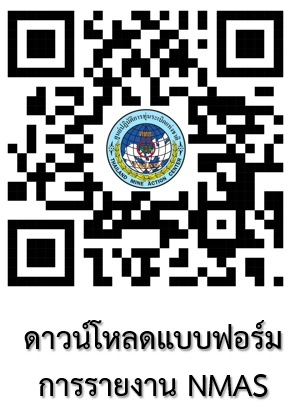II: Best practices for implementing the Convention
5. The States Parties are committed to meeting their obligations in the Convention’s traditional spirit of cooperation and transparency. In support of fulfilling their obligations, they will continue to recognize the special partnerships of the Convention with the United Nations, the International Committee of the Red Cross, the International Campaign to Ban Landmines and the Geneva International Centre for Humanitarian Demining and to foster partnerships with civil society in support of implementing the Convention. Since the entry into force of the Convention, the States Parties have identified best practices that are key to the successful implementation of the Convention’s obligations, including, but not limited to:
- strong national ownership;
- evidence-based national strategies and work plans;
APLC/CONF/2019/5
24
- integrating and mainstreaming gender considerations and taking the diverse needs and experiences of people in affected communities into account in mine action programming; • efficient use of available resources, including through the use of the latest methodologies in line with the International Mine Action Standards (IMAS); • partnership, coordination and regular dialogue between stakeholders; • national and international resource commitments, where possible on a multi-year basis; • transparency and the exchange of high quality and accurate information in line with the Convention obligations; • accurate and sustainable national information management systems; • the effective functioning of the Convention’s implementation machinery, including the work of the Committees, the support provided by the Implementation Support Unit and the holding of Meetings of the States Parties. 6. Recognizing these best practices, the States Parties will take the following crosscutting actions, which will contribute to the effective implementation of all areas of the Oslo Action Plan: Action #1 Demonstrate high levels of national ownership3, including by integrating Convention implementation activities into national development plans, poverty reduction strategies, humanitarian response plans and national strategies for the inclusion of persons with disabilities as appropriate, and by making financial and other commitments to implementation. Action #2 Develop evidence-based, costed and time-bound national strategies and work plans to fulfil and implement Convention obligations as soon as possible. Action #3 Ensure that the different needs and perspectives of women, girls, boys and men are considered and inform all areas of Convention implementation and mine action programmes, in order to deliver an inclusive approach. Strive to remove barriers to full, equal and gender balanced participation in mine action and in Convention meetings. Action #4 Take into consideration the needs of mine survivors and affected communities and ensure their meaningful participation in all Convention related matters, including their equal and active participation in Convention meetings. Action #5 Keep national mine action standards up to date in accordance with the latest International Mine Action Standards (IMAS), adapt them to new challenges and employ best practices to ensure efficient and effective implementation. Action #6 Strengthen partnerships and integrate responses between the mine action community and relevant humanitarian, peacebuilding, development and human rights communities, bearing in mind the 2030 Agenda for Sustainable Development.
3 The States Parties have defined national ownership as entailing the following: ‘maintaining interest at a high level in fulfilling Convention obligations; empowering and providing relevant State entities with the human, financial and material capacity to carry out their obligations under the Convention; articulating the measures its State entities will undertake to implement relevant aspects of Convention in the most inclusive, efficient and expedient manner possible and plans to overcome any challenges that need to be addressed; and making a regular significant national financial commitment to the State’s programmes to implement the Convention’.
APLC/CONF/2019/5
25
Action #7 States Parties in a position to do so will provide assistance, where feasible, to other States Parties in developing, updating or implementing their national strategies and work plans to fulfil their respective Convention obligations. Where possible, they will enter into multi-year partnerships and provide multi-year funding. Action #8 Provide quality information on progress and challenges in implementing the Convention, including on cooperation and assistance, by 30 April each year in line with Article 7, employing the Guide to Reporting4, and during formal and informal meetings. Action #9 Establish and maintain a national information management system containing accurate and up-to-date data at the national level on the status of implementation. The design and implementation of information management systems will ensure that they are nationally owned, sustainable and take into account the need for data that can be accessed, managed and analyzed post-completion. Action #10 Pay their assessed contributions in line with Article 14 of the Convention as early in the year as possible, and swiftly settle any arrears, to ensure that meetings can take place as planned. States Parties in a position to do so will consider providing voluntary resources for the effective functioning of the Implementation Support Unit (ISU), making multi-year commitments where feasible, in accordance with the ISU’s 5-year work plan.
Directions: The meaning in Thai and synonyms are provided for the underlined English vocabulary from the Oslo Action Plan given above.
(Primary) Stressed syllables หรือพยางค์ที่ออกเสียงเน้นหนักมากที่สุด จะใช้สัญลักษณ์เป็นตัวทึบและขีดเส้นใต้ ส่วนพยางค์ที่ออกเสียงหนักรองลงมา (Secondary) stressed syllables จะแทนด้วยตัวเอน
Best practices for implementing the Convention
- to be committed (passive voice)
- Cooperate (v.) ทำงานร่วมกัน cooperation (n.)
- Transparent (adj.) โปร่งใส Transparency (n.)
- Partnership (n.) การเป็นหุ้นส่วน Partner (n.)
- Committee (n.) กรรมการ
- Campaign (n.) รณรงค์
- Foster (v.) อุปถัมภ์
- Civil society (n.) ภาคประชาสังคม
- Ownership (n.) การเป็นเจ้าของ Owner (n.)
- Integrate (v.) รวมไว้ นำมารวม Integration (n.)
- Mainstreaming (n.) การบูรณาการประเด็น
- Diversity () ความหลากหลาย
- Methodologic (n.) กระบวนวิธี
- Stakeholders (n.) ผู้มีส่วนได้เสีย Stakeholder (n.)
- Commitments (n.) ภาระผูกพัน Commitment (n.)
- Sustainable (adj.) ที่ยั่งยีน Sustain (v.)
- Poverty (n.) ความยากจน
- Disabilities (n.) ความพิการ Disabled (a)
- Perspective (n.) มุมมอง
- Strive (v.) มุ่งมั่น
- Accordance (n.) ตาม According (adv./v.)
- Relevant (adj.) ที่เกี่ยวข้อง Irrelevant (adj.)
- Feasible (adj.) เป็นไปได้



















